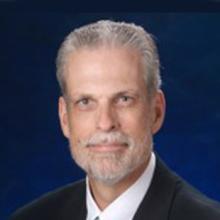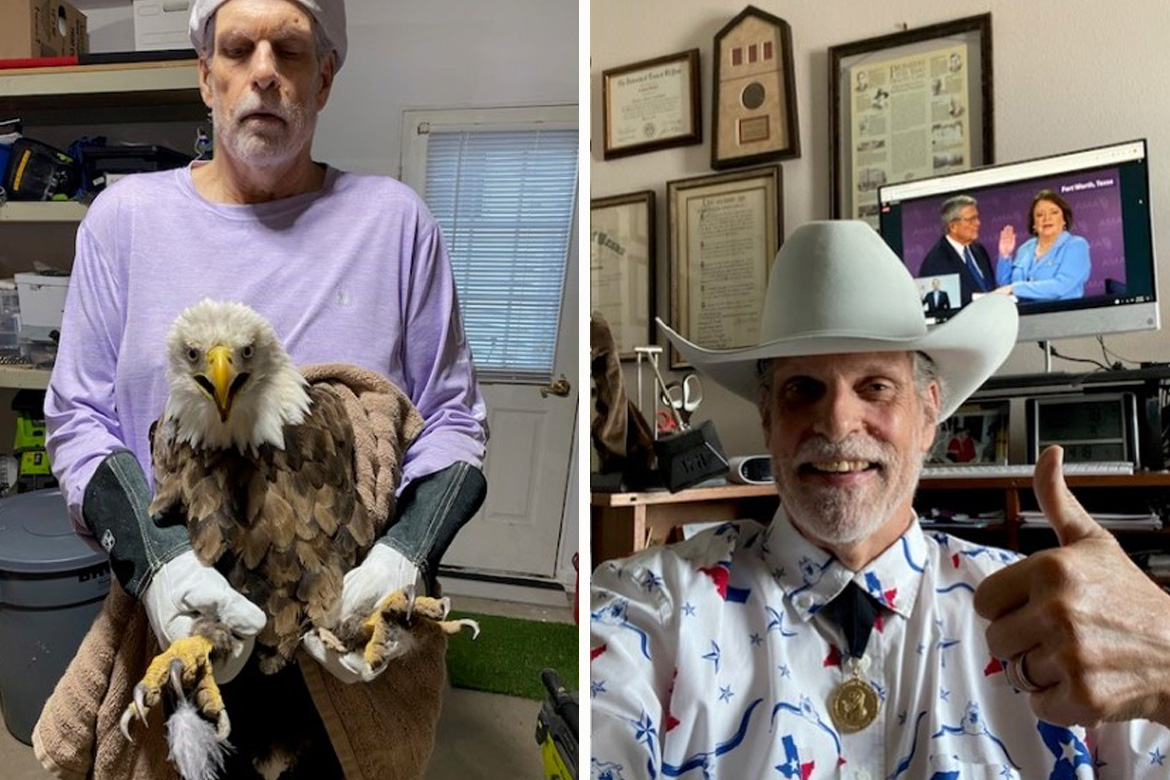May 2024 member spotlight
J. James Rohack, MD, FACC, FACP
- Member, Texas Medical Association since 1984; elected emeritus member in 2020
- Member, Texas Medical Association Delegation to the AMA HOD in 1984, served as alternate (84-92) and then delegate (93-01); elected to AMA Board of Trustees (01-11); served as chair (04-05)
- Member, AMA Council on Medical Education (95-01); served as chair (97-98)
- President, Texas Medical Association (2000-2001)
- President, American Medical Association (2009-2010)
Current Location: Sweden, New York
Specialty: Cardiovascular disease
Q: Many seniors share their time with local organizations as a mentor, and/or help those less fortunate. What opportunities do you see for retired physicians or those working part time to volunteer in their local communities?
A: For those physicians who want to continue within the medical profession, there are excellent opportunities to give back through mentorship as well as providing medical expertise through the AMA. The Senior Physicians Section is for those who have reached age 65 and provides opportunities for policy making, travel with fellow physicians and attending CME activities offered through JAMA Network™ and the AMA’s Ed Hub.
However, there are other sections and special groups that can provide ways to give back, for example, the International Medical Graduates Section, the Women Physicians Section, the Minority Affairs Section, and many others. Some meetings are virtual which allows participation without the financial and time costs to travel. In addition, the AMA hosts the Physician Innovation Network which connects health care innovation ecosystems with individual physicians to promote the art and science of medicine and remove obstacles that interfere with patient care.
Mentorship can also be provided to your local elementary, middle, high schools and community colleges as helping to fuel the passion for medicine as a profession and career is important for the future.
In addition, I have found volunteering with my wife—who is a wildlife rehabilitator and master falconer—to be very satisfying. During my time in AMA leadership, dealing with the uninsured was a key focus. However, the ultimate uninsured is wildlife. With human encroachment their natural habitat has been destroyed. As she specializes in birds of prey, we have seen the trauma due to motor vehicles and secondary kills due to rodenticide poisoning.
Birds of prey would normally eat the mice but when humans put out poison to kill the rodents, the hawk/owl/eagle eats the diseased rodent and thus a second kill ensues. There are agents that don’t cause second kills, but they are not marketed. I still find it sad that we have rescued bald eagles with lead poisoning as lead shot and sinkers are still permitted to be used by hunters and fisherman. I guess I should not be surprised as those who make profit will still resist change.
Q: Describe your leadership style and how you lead others? What advice would you give to the next generation of physician leaders?
A: John Maxwell described two types of leaders: those who gather followers and those who develop leaders. The great leader has characteristics of integrity, empathy, vision, humility and courage. My leadership philosophy is to be a teacher to ensure those I interact with can achieve their greatest potential and be better leaders than I.
My advice to the next generation is to follow the advice of Lao Tsu: “A leader is best when people barely know he exists, when his work is done, his aim fulfilled, they will say: we did it ourselves.”
Q: In your opinion, what can be done to address ageism within medicine, or in society in general?
Ageism is a bias against, discrimination towards, or bullying of individuals and groups on the basis of their age. The term was coined in 1969 by Robert Neil Butler to describe discrimination against the elderly, patterned on the terminology of sexism and racism. It is interesting that terminology appeared four years after Medicare was created when the average life expectancy was 68. In 2024, medicine does have some ingrained ageism on both ends of the age continuum.
The pediatrician, family medicine physician, internist and the geriatrician are the lowest paid and the hardest working in the medical profession. If those who provided care for the young and the elderly received an annual $500,000 income tax-free stipend from the federal government to recognize the value they provide to the future generation as well as those who provided through their blood, sweat and tears to the U.S., there may be the dramatic shift from systemic ageism to systemic value.
Knowing that solution is not going to happen in my lifetime, the other practical solution is to shine a light and call out ageism where it is. The AMA’s Center for Health Equity as well as the AMA House of Delegates are two venues to have the AMA’s help in solving the issue that adversely impacts our patients. Getting involved in AMA is never too late for anyone.
Contact us
Have information about SPS members doing great work? Email us at [email protected].





